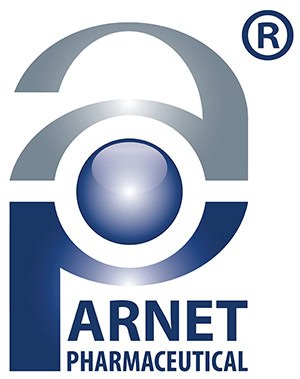
Choosing between softgels and hard capsules is a strategic decision that affects bioavailability, cost, speed to market, stability, and ultimately consumer trust. As a contract manufacturer, we evaluate the active ingredient, delivery requirements, regulatory constraints, and commercial goals to specify the format that will win on shelf and perform in the body.
Executive Summary: When Softgels Win vs. When Capsules Win
- Choose softgels when you have lipophilic actives (e.g., CoQ10, Vitamin D/E, omega-3, curcumin in oil), need taste and odor control, want oxygen-light protection, and can support slightly higher MOQs/lead times.
- Choose capsules when you need speed to market, vegan/HPMC options, multi-phase fills (beadlets + powder), sustained/enteric release via coating, probiotics or moisture-sensitive actives, and lower per-SKU tooling frictions.
Bioavailability & Absorption: The Deciding Chemistry
Softgels excel for fat-soluble or poorly water-soluble actives because they allow pre-solubilized delivery in oils or self-emulsifying systems (SEDDS/SMEDS). This reduces the dissolution work required in the GI tract and can enhance absorption. For example, CoQ10, curcuminoids, and carotenoids often demonstrate better uptake from oil-based softgel fills.
Hard capsules (gelatin or HPMC/vegan) are superior for dry powders, granulates, beadlets, or microencapsulated actives that rely on particle engineering (size reduction, coatings, dispersibility) to optimize absorption. Capsules pair well with prebiotics/probiotics, minerals, amino acids, and standardized botanicals where controlled release or dual-phase combinations (e.g., beadlets + powder) are desired.
Key takeaways
- If the active thrives in oil/semi-solid, softgels have a bioavailability-positive lean.
- If the active needs matrix engineering (beadlets, enteric coatings, multi-component blends), capsules offer more architectural flexibility.
- Dissolution: Softgels typically disintegrate quickly; capsule speed depends on the shell (gelatin vs. HPMC), fill density, and coatings applied.
Stability, Shelf Life & Compatibility
Softgels provide a hermetic shell that can reduce oxygen and light exposure, valuable for oxidation-prone oils (e.g., fish oil, algal oil). Modern shells can be clear, tinted, or opaque to improve photostability. However, softgels demand tight control of water activity, plasticizer content, and pH of the fill to prevent shell cross-linking or leak risk over time.
Capsules are inherently modular: you can protect sensitive actives through beadlet coatings, chelation, antioxidants, or desiccants placed inside the bottle. HPMC shells are preferred for moisture-sensitive formulas (certain probiotics, enzymes) thanks to lower water content and stability across a wider temperature/humidity range. Because capsules don’t require the fill to be oil-compatible, you can utilize dry carriers that improve flow, content uniformity, and shelf-life.
Stability summary
- Oxidation-prone oils → softgel advantage.
- Moisture-sensitive or live microbials → capsule (HPMC) advantage.
- Light protection → both formats, but softgels offer opaque/tinted shells without a secondary coat.

STARTING YOUR SUPPLEMENT BRAND?
Contact Us: tel: 800-968-6673 Or email us: info@arnetusa.com
Formulation Flexibility & Release Profiles
Softgels handle oils, suspensions, pastes, and semi-solids with excellent taste/odor masking. They are highly brandable (colors, shapes, surface printing) and consumer-friendly for swallowability. Enteric softgels exist, but add complexity and cost.
Capsules support:
- Powders + beadlets for dual-phase delivery.
- Enteric or sustained-release via external coating (widely available).
- Sprinkle capsules (open-and-pour) for on-the-go or pediatric/geriatric use.
- Two-tone shells, branding bands, tamper evidence, and full vegan compatibility (HPMC/pullulan).
If your differentiation depends on release kinetics (e.g., enteric protection for acid-sensitive actives or 12-hour sustained release) and you want coating latitude, capsules are usually the faster, more economical path.
Speed to Market: Tooling, Changeovers & Lead Times
Softgels require specialized tooling and process windows: die rolls, seam integrity, leak tests, and drying tunnels. Custom colors/finishes and shell optimization extend validation. Expect longer line scheduling and changeover durations. Softgel projects often progress through pilot runs to finalize viscosity, fill weight, and seam performance before scaling.
Capsules typically move faster:
- Minimal tooling (capsule size/brand standardization helps).
- Rapid scale-up for powder fills.
- Coating (enteric/SR) is a standardized downstream step with predictable throughput.
- Packaging accommodates a wider bottle-count range and desiccant integration.
Practical expectation
- Capsules: often the quickest route from formula sign-off to commercial lot, especially for multi-SKU lines or line extensions.
- Softgels: add weeks to fine-tune fill rheology, seam, and drying, but reward you with a premium look/feel and taste control that consumers recognize.
Cost Model: Where the Dollars Really Go
Softgel costs concentrate in shell materials (gelatin/alternative), plasticizers, processing yields, drying capacity, and tooling setup. Softgels can achieve excellent unit economics at scale, but small runs and frequent color/size changes increase waste and overhead. If your formula demands enteric softgels or special shells, factor in additional per-unit and validation costs.
Capsule costs spread across excipient selection (flow agents, disintegrants), capsule shell (gelatin or HPMC/vegan), and optional coating. Because changeovers are faster and tooling amortization is lower, capsules usually offer more flexible MOQs and tighter timelines—often with a lower landed cost for short-to-medium runs.
Cost levers to model
- Batch size & yield: Larger lots reduce overhead per unit.
- Shell selection: HPMC/vegan carries a premium over gelatin; softgel shell variants vary by supplier.
- Coating steps: Enteric/SR adds cost and time (mostly on capsules; softgel enterics are a higher premium).
- Testing & release: Micro, potency, dissolution/disintegration, residual solvents as applicable.
- Packaging: Bottles vs. blisters, desiccants, light-barrier films, cartons, and serialization (if required).
Consumer Experience, Compliance & Label Claims
Softgels deliver taste/odor masking, smooth swallowability, and a premium visual—key drivers for fish oils and lipid actives. They also discourage tampering (difficult to open). For “clean label” or vegan claims, note that traditional softgels use gelatin, while vegan softgels exist but may impact cost and supply.
Capsules foster clean label, vegan, gluten-free, and allergen-friendly narratives with HPMC shells. They enable transparent dosing (you can see the fill) and sprinkle use. For probiotics, enzymes, or acid-sensitive actives, capsules combined with enteric coating or protective beadlets help achieve survivability and CFU claims.
Regulatory & quality
- Both forms must meet 21 CFR Part 111 (cGMP), identity/potency/purity specs, and labeling rules.
- Dissolution/disintegration specs differ by USP monographs and format—we align methods and specs during tech transfer.
- We validate content uniformity, micro, residual solvents (if applicable), oxidation markers for oils, and stability under ICH conditions.
Decision Matrix: Pick the Right Format—Fast
- Your active is oil-soluble, oxidation-prone, or needs taste control → Softgel.
- Your active is moisture-sensitive, probiotic, or requires multi-phase delivery → Capsule (HPMC).
- You need enteric or sustained release quickly and at scale → Capsule + coating.
- You need the fastest path to launch across multiple SKUs → Capsule.
- You want premium appearance and strong odor masking → Softgel.
- You require vegan/vegetarian positioning → Capsule (HPMC) or vegan softgel (budget for premium).
Project Checklist: From Formula to Commercial Lot
- Define outcomes: Target bioavailability, dose form, release profile, and marketing claims.
- Pre-formulation: Solubility (oil vs. water), pH, oxidation risk, hygroscopicity, target capsule size.
- Select shell: Gelatin vs. HPMC, color/tint, opacity needs, printing/banding.
- Build the matrix: Oil system for softgels (incl. emulsifiers/antioxidants) or excipient plan for capsules (flow, disintegration, beadlets).
- Stability strategy: Light/oxygen barrier, desiccants, enteric/SR if needed, ICH conditions.
- Regulatory: Part 111 documentation, label copy, claims substantiation, COA framework.
- Manufacturing plan: MOQs, line scheduling, tooling, packaging, and QC sampling plans.
- Commercial readiness: Artwork, bottle/blister specs, ship tests, and traceability.
- Post-launch: Monitor returns/complaints, dissolution, and stability pulls; iterate if performance drifts.

STARTING YOUR SUPPLEMENT BRAND?
Contact Us: tel: 800-968-6673 Or email us: info@arnetusa.com
FAQs
Q: Is bioavailability always better with softgels?
A:Not always. Oil-friendly actives can benefit from softgels; powders engineered with beadlets/matrices perform superbly in capsules—especially with enteric or sustained-release design.
Q: Are vegan softgels widely available?
A: Yes, but expect higher cost and longer lead times than standard gelatin softgels. HPMC capsules remain the fastest vegan option.
Q: What about flavor or odor issues?
A: Softgels are excellent at blocking fishy or botanical odors. Capsules mitigate odors with odor-control liners, desiccants, and coated particles when needed.
Q: Which format launches faster?
A: In most cases, capsules. Softgels add shell validation and drying time, which can extend schedules—but can be worth it for premium oil actives.
Q: Are softgels or capsules easier to keep compliant with FDA rules?
A: Both dosage forms must meet FDA 21 CFR Part 111. What differs is the control strategy—softgels focus on oil/semi-solid production controls and seam/drying; capsules focus on blend uniformity and shell/coat suitability. The governing standard is the same: Part 111 cGMP.
Bottom Line
There is no universal winner in the debate between softgels and capsules—the right choice is a formulation-driven, commercial decision. For fat-soluble actives, high oxidation control, and taste masking, softgels often deliver the edge. For speed to market, vegan claims, multi-phase release, and moisture-sensitive ingredients, capsules provide unmatched flexibility and efficiency. We align the chemistry, manufacturing, and brand strategy to specify the format that achieves your bioavailability targets, budget, and timeline—and scales cleanly from pilot to commercial.